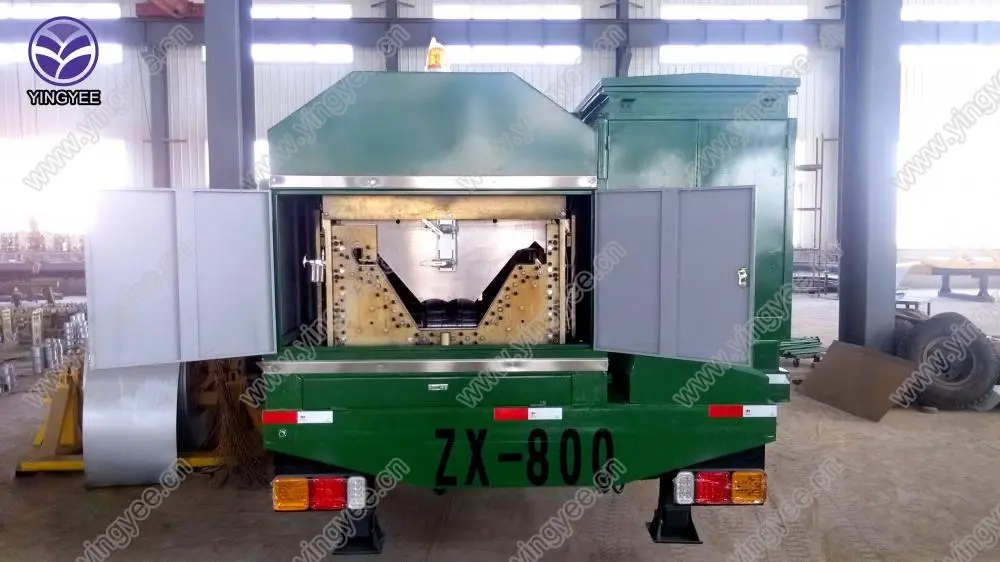
Customized Angle Stud and Track Roll Forming Machine A Comprehensive Overview
In the realm of modern construction and structural design, precision and efficiency are paramount. One of the most significant innovations to facilitate these qualities is the customized angle stud and track roll forming machine. This sophisticated machinery plays a critical role in producing high-quality building components, essential for erecting both residential and commercial structures. This article explores the core functions, advantages, and potential applications of this innovative equipment.
The Basics of Roll Forming
Roll forming is a process that involves feeding a continuous strip of metal through a series of rollers, which gradually shape the metal into the desired profile. This method is particularly efficient for producing long lengths of uniform sections with high precision. The customized angle stud and track roll forming machine specifically focuses on creating angular studs and tracks that are integral to framing systems in construction.
Key Features of the Machine
A typical customized angle stud and track roll forming machine boasts several essential features
1. Adjustable Roller Stations This machine consists of multiple roller stations that can be adjusted to create different profiles. The flexibility in design allows for a wide range of custom angles and sizes, catering to various construction needs.
2. High Speed and Efficiency With modern technological advancements, these machines can operate at impressive speeds, significantly reducing production time. This efficiency is crucial, especially when manufacturing components for large-scale construction projects.
3. Integrated Cutting Systems Many roll forming machines incorporate automated cutting systems that allow for precise length cutting of angle studs and tracks. This feature not only enhances accuracy but also minimizes waste, contributing to more sustainable production practices.
4. User-Friendly Controls Most machines are equipped with intuitive control panels, making it easy for operators to set parameters, monitor production, and troubleshoot any issues that may arise.

Advantages of Using a Customized Angle Stud and Track Roll Forming Machine
1. Versatility in Design The ability to customize the angle and dimensions of studs and tracks means that designers and builders can create tailored solutions for unique structural requirements. This versatility improves the overall architectural flexibility.
2. Cost-Effective Production By automating the production of angle studs and tracks, manufacturers can significantly reduce labor costs and improve overall operational efficiency. The reduction in manual labor not only cuts costs but also decreases the likelihood of human error.
3. Improved Strength and Stability Roll forming creates profiles that typically exhibit enhanced structural integrity compared to alternative methods. This is particularly important in high-stress applications where strength and durability are critical.
4. Environmentally Friendly The precision of roll forming leads to minimal waste, and using recyclable materials further enhances its sustainability profile. As the construction industry increasingly seeks eco-friendly solutions, this machine stands out as a responsible choice.
Applications in Construction
The versatility of customized angle studs and tracks makes them ideal for various applications in construction. These components are crucial in framing systems, serving as vertical and horizontal supports that help uphold walls and ceilings. They are widely used in both residential homes and commercial buildings due to their lightweight nature and ease of installation.
Additionally, with the growing trend towards modular construction, where building elements are produced off-site, the demand for efficient roll forming solutions is on the rise. This machine not only meets these demands but also aligns with the industry's move towards prefabrication.
Conclusion
In summary, the customized angle stud and track roll forming machine represents a significant advancement in construction technology. Its ability to produce tailored, high-precision components efficiently makes it an invaluable asset in the construction industry. As builders and manufacturers continue to seek innovative solutions, this machine will undoubtedly play a critical role in shaping the future of structural design and construction. Through its versatile and sustainable practices, it embodies the evolution of modern construction methods.